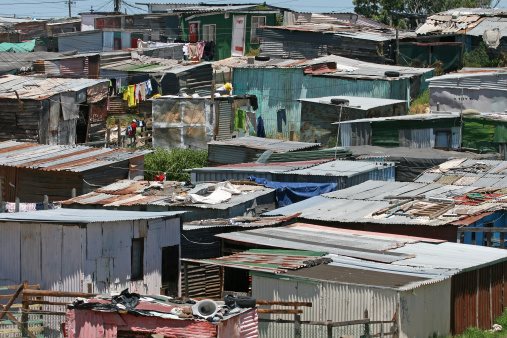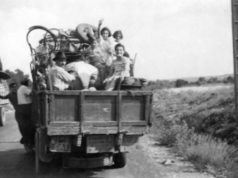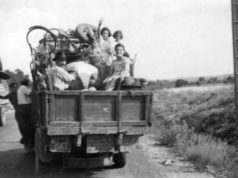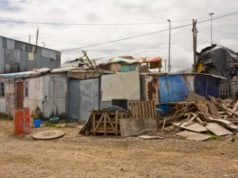
The Hungarian Revolution of 1956
The Hungarian Revolution of 1956 was an important event in the Cold War. When the revolutionary forces fought against Soviet Union troops, almost 200,000 Hungarians fled to other countries to escape persecution. These refugees fled to various parts of Europe and North America seeking asylum and a new life. In this article, we will discuss the impact and experiences of Hungarian revolution refugees.
The Flight of Hungarian Revolution Refugees
Following the Hungarian Revolution, the country was occupied by Soviet troops, and repression against the revolutionaries was severe. As a result, almost 200,000 Hungarians fled the country. Many of these refugees crossed the border into Austria, often walking for days in harsh conditions to reach safety. The refugee crisis was one of the greatest movements of people in history, and many countries opened their borders to provide them with shelter and asylum.
Refugee Camps
The Austrian government established a network of refugee camps to accommodate the large number of Hungarian refugees. These camps were often overcrowded and inadequate for the harsh winter season. However, the international community responded with compassion by providing aid and supplies, which helped alleviate the suffering of Hungarian refugees.
Asylum-Seeking and Resettlement
Hungarian revolution refugees sought asylum in neighboring countries such as Austria, Yugoslavia, and Italy and eventually resettled in various parts of the world, including the United States. Over 35,000 refugees, many of them young and highly skilled, were granted asylum in the United States through the Hungarian Refugee Program. Canada, Australia, and other countries also welcomed Hungarian refugees to their shores, contributing to the worldwide diaspora of Hungarians.
Impact and Legacy
The Hungarian Revolution of 1956, and the resulting refugee crisis, had a significant impact on European and global history. It was a turning point in the Cold War, as it highlighted the struggles of people who had suffered under Soviet rule and brought attention to the idea of refugees as a global concern. The Hungarian revolution refugees who settled in the United States and other countries brought with them their culture, skills, and experiences, contributing to the richness of diversity in these societies.
Conclusion: A Legacy of Courage and Resilience
The Hungarian revolution refugees faced significant adversity, but their courage and resilience have left a lasting legacy. In fleeing to new countries and making new lives, they contributed to making their new homes a more diverse and tolerant place. The history of Hungarians during the Cold War and their difficult experiences as refugees tells a powerful story of human rights struggles and the ongoing importance of providing refuge for those who need it.
The 1951 United Nations Convention Relating to the Status of Refugees was a major resolution for the United Nations, and exists as a core component of international refugee law today. However, while the 1951 convention established the binding definition of a refugee as one who exhibits a well-defined fear of returning to his or her country of origin for fear of persecution and bodily harm, it also restricted the definition to those who had become refugeesUNHCR
The Hungarian Revolution of 1956 was such an instance that brought the subject of refugee status and images of Cold War-era Europe to the forefront of the international consciousness. Its genesis was perhaps strange with the idea it was so spontaneous in nature.
The Hungarian Revolution started as a student demonstration in October of 1956 against the Soviet control of Hungary in the capital city of Budapest and involved, among other things, the toppling of a huge statue of Joseph Stalin erected five years earlier.
In virtually no time, violence erupted in the city as the State Security Police fired on the protesters, prompting belligerence from the remaining students. With the Soviets ushering in tanks and trying to impose their will on the Hungarian dissidents, though, revolution quickly spread to the rest of the country. The revolt reacted with great force, kidnapping and killing members of the Police and driving Soviet troops out of Budapest. In the cease fire that followed, Hungary aimed to abolish the Communist government in place, institute a more democratic form of government, and abandon Hungary’s membership in the Warsaw Pact.
This would not come to pass, though. Initially, Soviet officials vowed to let the new Hungarian government stand, but soon after, they reversed this decision and set upon violently crushing the Revolution. Almost as quickly as it began, the Hungarian resistance was quelled and Soviet occupation of Hungary was restored. Numerous arrests and executions of suspected revolutionaries ensued, and the Hungary refugee movement quickly snowballed.
However, going back to the notion of the 1951 convention being retroactive, it was unclear whether these displaced persons could really be termed “refugees.” After the mass exodus from Hungary, refugee status seekers exceeded 200,000. What helped their quests for resettlement and repatriation was the imagery that accompanied the aftermath of the failed Revolution.
Television reports focused on these displaced persons showed their suffering in great detail, and TIME magazine even named the “Hungary freedom fighter” as their Person of the Year. Quite generally, the plight of the Hungary refugee evoked much sympathy from the international community; conversely, the Soviets were subject to scorn for how they handled the suppression of the Revolution.
The UNHCR, acting on behalf of the United Nation’s larger condemnation of the Soviets’ role in the affair, issued a prima facie justification for conferring refugee status upon displaced persons from Hungary, highlighting their apparent need despite convention bylaws. The United States government, they also blurred the distinction between displaced persons and refugees. The Committee for Hungarian Refugee Relief was established in 1957, and some 30,000 members of the Hungary refugee movement were resettled.

























